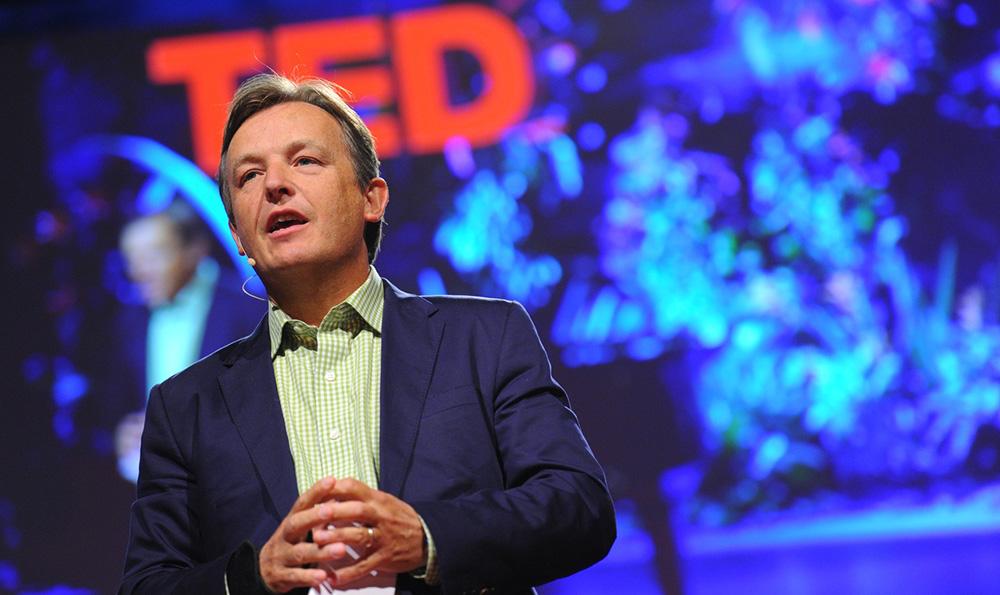by
_____
Near the beginning of his new book, TED impresario Chris Anderson confesses he’s “not naturally a great speaker.” He’s prone to too many ums and you knows, stumbles and grasps for the right word, and can come across as overly earnest.
Nice trick. Revealing your shortcomings at the outset is one of the nuggets of advice he provides in this book – that early displays of vulnerability create a powerful bond with your audience.
Anderson’s TED Talks: The Official TED Guide to Public Speaking is a welcome and long overdue addition to the proliferation of how-to TED books, guides, seminars, workshops and webinars written and led by all manner of coaches and experts. It’s high time we got it straight from the source.
Diffident speaker though he may be, Anderson is a passionate evangelist for the combination of a human being, a stage, and a powerful idea.
It doesn’t have to be a scientific breakthrough, a genius invention, or a complex legal theory. It can be a simple how-to. Or a human insight illustrated with the power of a story. Or a beautiful image that has meaning. Or an event you wish might happen in the future. Or perhaps just a reminder of what matters most in life.
Anderson took over the annual TED ideas conference in 2001 when its founder, the architect and graphic designer Richard Saul Wurman, was on his way out. It took a while for Anderson, a new media entrepreneur, to find his footing, but under his stewardship the conference thrived.
As TED grew, Anderson and his team looked for a way to share some of their growing video content of TED speakers and hit on the idea of of creating a weekly TV show. They shopped it around to TV network executives, who failed to see the point. Over and over they heard: Talking heads make for boring TV.
In the meantime, something else was happening – the internet was exploding. Bandwidth was expanding. And in 2005 a fledgling video website called YouTube burst onto the scene, proving that online video could draw a very large audience indeed.
Inspired by YouTube’s runaway success, Anderson and his team took a gamble in 2006 and posted six TED talks on their ted.com website. The first day they got 10,000 views. In three months they had a million. What was once a gathering for intellectual and cultural elites became a cultural sensation.
In 2009 the TED movement took another expansive leap by licensing the format to local communities in the form of TEDx Talks. Now there are tens of thousands of TEDx talks uploaded onto TED’s website.
Not only has the TED phenomenon put a spotlight on some of the world’s best best speaking talent, it’s has upped the game for speakers and presenters and sparked a renaissance in public speaking.
The only thing I can think of that’s played anything like a comparable role in the public speaking world was the influence of Steve Jobs, whose meticulous style, stage presence, and design sensibility have left an enduring impact.
Anderson sees the rise of TED as a sign of the times. With so much of the world’s information at our fingertips, audiences today crave a different sort of knowledge – not narrow and specialized but big picture, authentic and inspirational.
To satisfying our hunger for meaning, speakers must pull back the lens, synthesize, tell powerful stories, and connect.
Anderson knows the majority of his readers will be looking for the secret sauce. How do you succeed on the TED stage?
He obliges with an abundance of practical tips and insights, walking us through the fundamentals of preparation – slide design, rehearsing, and controlling nerves. He has helpful chapters on structure, storytelling, persuasion, and more.
He knows all too well the multitude of things that can go wrong on stage and the varieties of mortification: forgetting your lines, freezing, stuttering, jokes that fall flat, a voice that’s too flat, speaking too slow, speaking too fast (actually that’s not so bad), and all manner of technical snafus.
And what about that inviolable 18-minute time limit? Anderson reveals the secret – it’s “short enough to hold people’s attention .. but long enough to say something that matters.”
He’s certainly right about that: brevity is best.
As a sometime delivery coach with an embarrassing number of public speaking books on my own shelf, I’ve never come across such a lucid, pragmatic discussion of the pros and cons of fully scripting and memorizing your speech – versus creating an outline and speaking more extemporaneously.
One of the pitfalls of the memorization route comes when speakers get their talk down stone cold, and then proceed to deliver it in rote, robotic manner. Anderson calls this “the uncanny valley” – a term taken from computer animation when artificial, humanlike characters come close to seeming real, but not quite close enough. It looks creepy.
That’s not ideal – especially not when the success of a TED talk depends on the deeply felt link between speaker and audience.
Anderson’s advice is to push past the memorized lines, be in the moment, and use your conscious attention to create that transcendent human connection.
Wise advice for all speakers with large ambitions and ideas worth sharing.
© Copyright 2016
________________________________
Want to talk? Reach me at dana@danarubin.com

